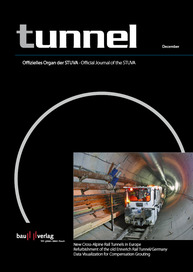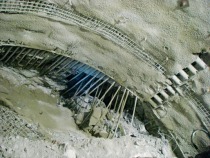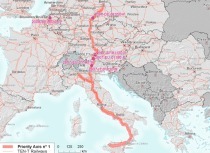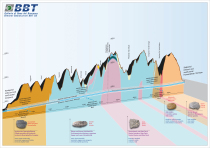New Semmering Base Tunnel: Exploratory Phase concluded
The roughly 27 km long new Semmering Base Tunnel (nSBT) on the selected Pfaffensattel alignment consists of 2 single-track tunnel bores, which are connected with one another via cross-passages every 500 m.
The tunnel is to be driven via the 2 portals (Münzzuschlag in the west and Gloggnitz in the east) as well as 2 intermediate points of attack, both cyclically (NATM) as well as continuously (with TBM).
The second exploratory phase along the chosen route (Pfaffensattel) was concluded in September 2009. The investigatory drilling – 56 core drill holes down to a depth of 720 m involving almost...





